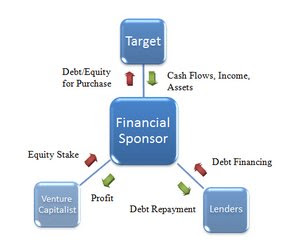as presented on: http://www.fulbright.org.uk/pre-departure/academics/marks
Conversion Guide: UK Grading (WAM) to US Grading (GPA/IPK)
One important difference to be aware of is the emphasis on continual assessment. Most UK/Australia universities determine your marks based on your performance on examinations at the end of term. In the US, the papers and problem sets you complete during the term are often weighted as heavily as midterm exams and final exams.
Some classes may have weekly quizzes and daily homework, and you may not even have a final examination. Therefore, it is very important that you take these periodic evaluations just as seriously. At the beginning of each term, your professors will provide you with a syllabus detailing the assignments for the class and the weight (or percentage of the final mark) of each assignment as well as their expectations of you.
As an example, your final grade may consist of 10% class participation and attendance, 15% weekly quizzes, 15% daily homework, 20% papers (more than one per term) and 40% divided between a midterm exam and final exam. If you are ever unsure of how you are being evaluated, do not be afraid to ask!
Marks
US marks, or grades, are expressed differently than in the UK/Australia. The overall percentage (0-100%) for each class is converted into a letter grade (A, B, C, D or F), which is then recorded on the student’s transcript. Some universities also use the +/- system which allows for a wider range in determining students’ grade point averages.
The cut-off percentages vary by university, by department and sometimes by class. However, they tend to follow a system in line with the chart below. In the US, it is usual for students to receive marks in the 80-100 percentage range as this is considered the threshold for "good" work.
How to Calculate a GPA
A GPA (Grade Point Average) is one cumulative number to represent all of the marks earned during your undergraduate and postgraduate study to date. Each semester, your GPA is re-calculated to account for your most recent grades.
| US Percentage | US Grade | US GPA |
| 90-100 | A | 4.0 (A+ = 4.33; A- = 3.67) |
| 80-89 | B | 3.0 (B+ = 3.33; B- = 2.67) |
| 70-79 | C | 2.0 (C+ = 2.33; C- = 1.67) |
| 60-69 | D | 1.0 (D+ = 1.33; D- = 0.67) |
| 0-60 | F | 0 |
To calculate your GPA:
1. First the professor will convert your percentage grade to a letter grade, which is the final grade that will be reported to you
2. This letter grade is then converted into a grade point (each letter has a corresponding value)
3. Each grade point is weighted by the number of credits that class is worth
4. Each weighted grade point (for each class) is added together
5. Finally the sum of all your class grades is divided by the sum of the hours your classes are worth
2. This letter grade is then converted into a grade point (each letter has a corresponding value)
3. Each grade point is weighted by the number of credits that class is worth
4. Each weighted grade point (for each class) is added together
5. Finally the sum of all your class grades is divided by the sum of the hours your classes are worth
For example, if you received an A- in a 4 credit class and three B+’s in 3 credit classes:
(4 X 3.67) + (3 X 3.33) + (3 X 3.33) + (3 X 3.33) /13 = 3.43
This would be a good GPA for your first term in the US. Sometimes a major GPA is calculated separately from the overall GPA. The overall GPA represents all marks the student has earned, including the general education classes, the major classes and the minor classes, while the major GPA represents only the coursework completed for the major.
Class Rank
Unlike in the UK/Australia, some US universities rank their students according to their GPA. The valedictorian is the student with the top GPA, while the salutatorian is the student with the second highest GPA.
Other students can graduate with “honours” (called by its Latin translation, cum laude) or even “great honours” and “greatest honours” (magna cum laude and summa cum laude).
Conversion Guide
A rough guide for converting between the UK/Australia and US grading systems can be found below. If you are studying in the US for a short period of time, your UK/Australia university will most likely apply its own system of grading.
| UK Class | UK Percentage | US Grade | US GPA |
| First | 70-100 | A | 4.0 |
| Upper second | 60-69 | B+/B | 3.0-3.33 |
| Lower second | 54-59 | B/B- | 2.67-3.0 |
| Third | 42-53 | C | 2.0 |
| Pass | 38-41 | D | 1.0 |
| Fail | 0-37 | F | 0 |
Please note that the percentage values differ greatly between the US and the UK/Australia. This is important to keep in mind when applying to a school. If asked for a percentage, do not list your UK/Australia percentage as a US percentage. They are not the same!



























